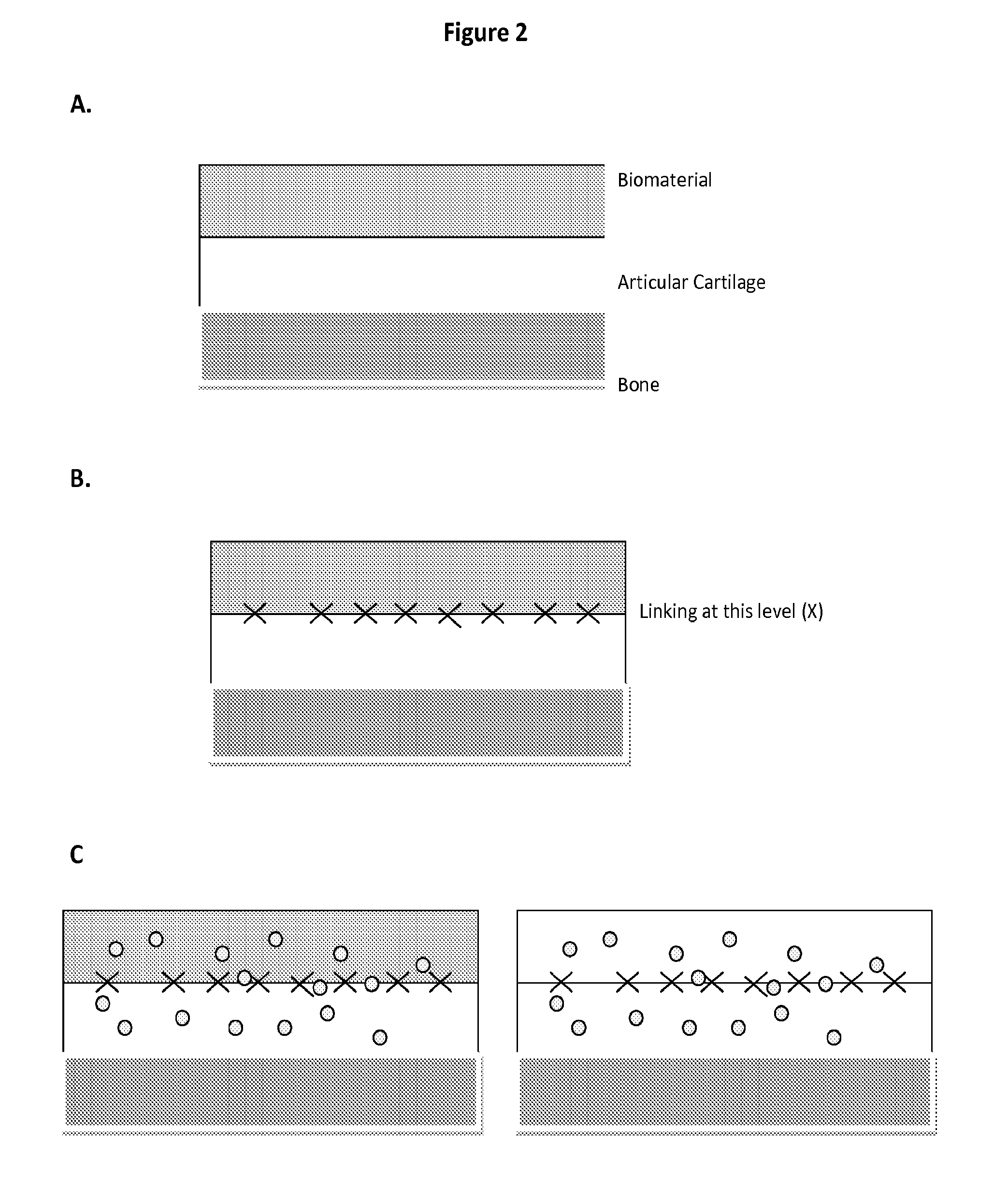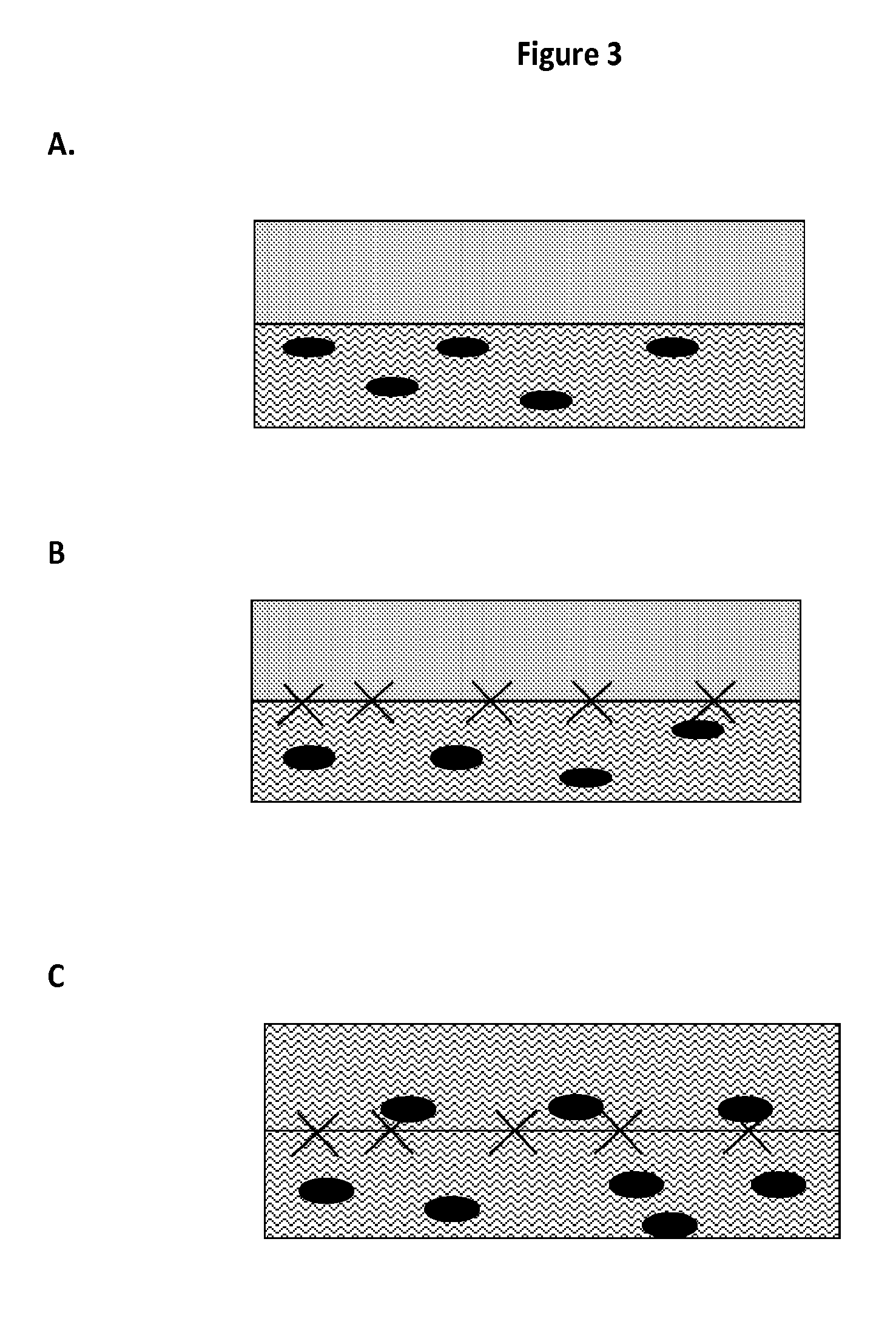Biomaterial for articular cartilage maintenance and treatment of arthritis
- Summary
- Abstract
- Description
- Claims
- Application Information
AI Technical Summary
Benefits of technology
Problems solved by technology
Method used
Image
Examples
example 1
Outgrowth of Chondrocytes from Human Articular Cartilage Explants and Expression of Alpha-Smooth Muscle Actin
[0119]The objectives of this EXAMPLE were to investigate the effects of enzymatic treatment on the potential for cell outgrowth from adult human articular cartilage and to determine if α-smooth muscle (α-sm) is present in chondrocytes in articular cartilage and in the outgrowing cells.
[0120]Material and Methods
[0121]Samples of articular cartilage were obtained from 15 patients undergoing total joint arthroplasty for osteoarthrosis. While the specimens were obtained from patients with joint pathology, areas of cartilage with no grossly noticeable thinning, fissuring, or fibrillation were selected. Using a dermal punch, cylindrincal samples (4.5 mm diameter and 2-3 mm thick), were cut from the specimens. Explants were cultured in 6-well culture dishes and oriented so that deep zone of the tissue contracted the culture dish. In the first test, 20 cartilage samples were obtained ...
example 2
The Migration of Cells from the Ruptured Human Anterior Cruciate Ligament into Collagen-Based Regeneration Templates
[0129]Introduction
[0130]One object of the present disclosure is to restore only the ligament tissue which is damaged during rupture, while retaining the rest of the ligament. The model used in this EXAMPLE involves filling the gap between the ruptured ligament ends with a bioengineered regeneration bridge, or template, designed to facilitate cell ingrowth and guided tissue regeneration. In this EXAMPLE, one of the critical steps in guided tissue regeneration was investigated, namely, the ability of cells in the adjacent injured ligament tissue to migrate into the regeneration template. This EXAMPLE focuses on whether the cells of the human anterior cruciate ligament cells are able to migrate to a template after the anterior cruciate ligament has been ruptured. It was also intended to show that the cells which migrated expressed a contractile actin isoform, α-sm actin, ...
example 3
Effects of Growth Factors and Collagen-Based Substrates the Fibroinductive Properties of Fibroblast Migration
[0155]The purpose of this EXAMPLE is to determine the process of fibroblast-mediated connective tissue healing and how specific alterations in the extracellular environment alter this process. The effects of 4 different growth factors and 4 collagen based substrates on features associated with the repair processes in connective tissues which successfully heal were quantified. These processes are the fibroinductive properties of fibroblast migration, proliferation, and type I, type II, and type III collagen synthesis. The effects of environmental modifications on the expression of a contractile actin isoform, α-smooth muscle actin (α-sm) were also defined.
[0156]In EXAMPLE 3, it was demonstrated that fibroblasts in the ruptured anterior cruciate ligament are able to migrate from their native extracellular matrix into a 3-D CG scaffold in vitro. This EXAMPLE provides improved ra...
PUM
| Property | Measurement | Unit |
|---|---|---|
| Fraction | aaaaa | aaaaa |
| Time | aaaaa | aaaaa |
| Dimensionless property | aaaaa | aaaaa |
Abstract
Description
Claims
Application Information
 Login to View More
Login to View More - R&D
- Intellectual Property
- Life Sciences
- Materials
- Tech Scout
- Unparalleled Data Quality
- Higher Quality Content
- 60% Fewer Hallucinations
Browse by: Latest US Patents, China's latest patents, Technical Efficacy Thesaurus, Application Domain, Technology Topic, Popular Technical Reports.
© 2025 PatSnap. All rights reserved.Legal|Privacy policy|Modern Slavery Act Transparency Statement|Sitemap|About US| Contact US: help@patsnap.com



